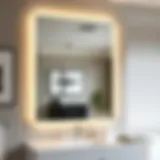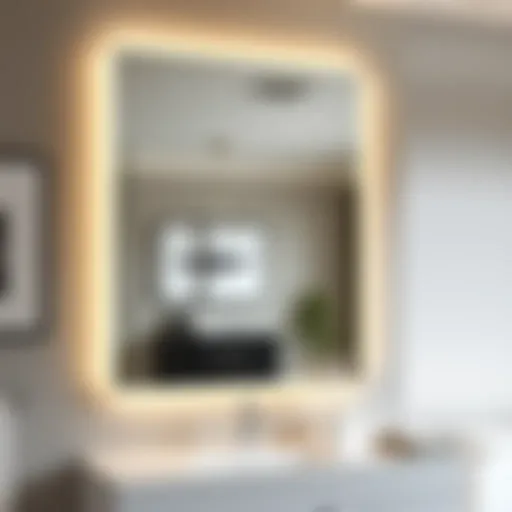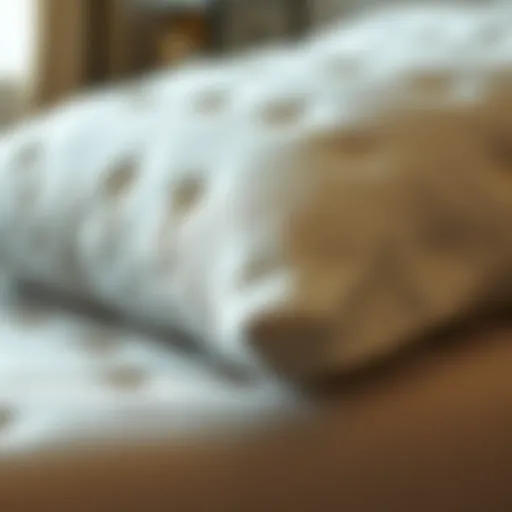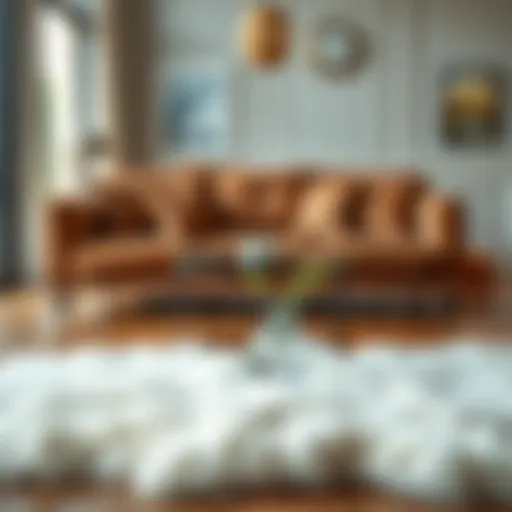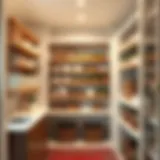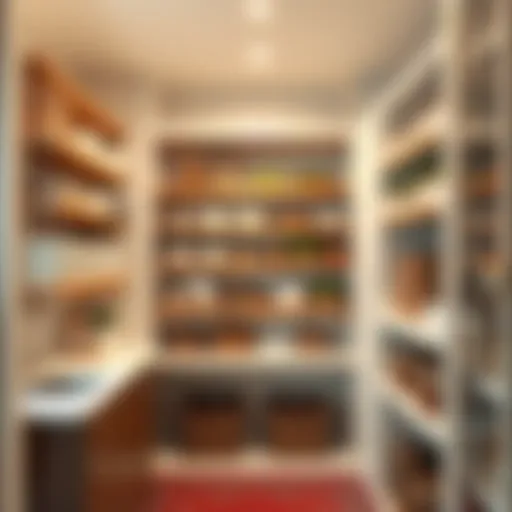The Importance of Heavy Duty Cabinet Legs in Furniture
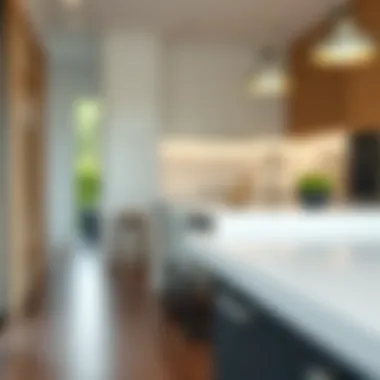
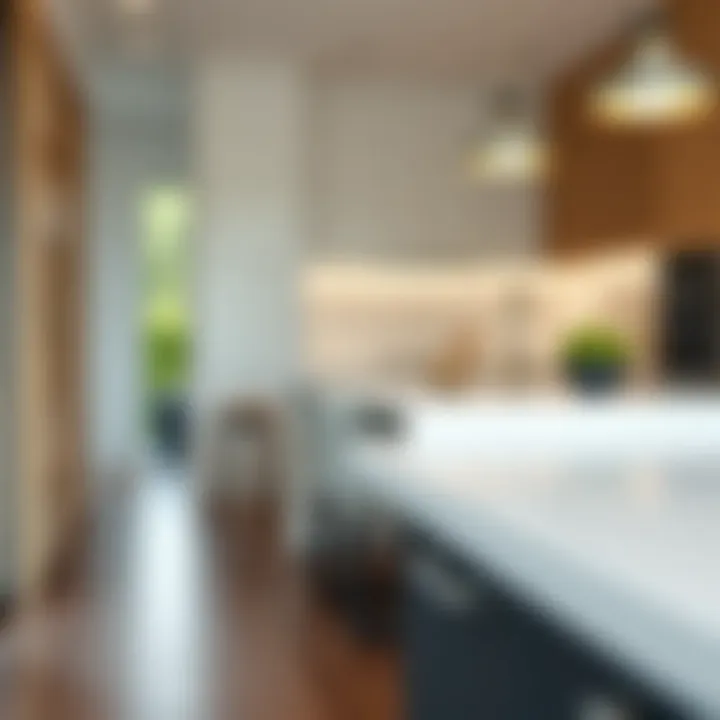
Intro
In the world of furniture design, the sentiment often expressed is that the roots of a sturdy piece lie in its legs. This saying rings particularly true when considering the importance of heavy duty cabinet legs. These components are not merely an afterthought; they form the very backbone of cabinets and play a critical role in defining both their functionality and style. Homeowners, designers, DIY enthusiasts, and real estate professionals alike must recognize the significance these legs hold in transforming an ordinary piece of furniture into a reliable and visually appealing statement in any space.
Furniture Trends
Current Design Trends
As we navigate through an ever-evolving landscape of home decor, heavy duty cabinet legs are stepping into the limelight, adapting to contemporary tastes while maintaining their core functionality. Today’s designs often lean towards minimalism, where clean lines and sleek profiles are preferred. This fusion of style and strength is seen in various forms, from industrial metal frames that exude toughness to wooden legs crafted from reclaimed timber, appealing to eco-conscious consumers.
The trend of customization is also thriving. With an array of options available, it's easy for designers and DIYers to mix and match styles, creating a hybrid aesthetic that resonates with personal tastes. For instance, a mid-century modern cabinet can be perfectly complemented with tapered metal legs, making a chic stand against its vintage charm.
Popular Color Palettes
When it comes to colors, earth tones like deep greens and rich browns are gaining traction in furniture design. The combination of these shades with heavy duty legs—often finished in oil-rubbed bronze or matte black—enhances the natural beauty of materials used in cabinets. Further, softer hues such as pastel blues and pinks can add a fresh twist, bringing a playful quality to any room.
The choices in colors resonate deeply with a growing focus on creating harmonious living environments. With a well-thought-out color palette that aligns with heavy-duty legs, furniture can help to create balance and unity within a space, not to mention elevate the overall aesthetic appeal significantly.
Practical Tips
Furniture Maintenance and Care
Choosing the right heavy duty cabinet legs isn’t just about aesthetics; it’s about ensuring longevity. Regular maintenance is crucial to keep furniture looking its best. Here are a few pointers:
- Regular cleaning: Dust can accumulate quickly, especially on fixed legs. A damp cloth can work wonders in keeping them free from grime.
- Inspect for wear and tear: Periodically check for any signs of damage, whether that means a dent in the leg or loose screws. Addressing issues early can avoid bigger headaches later.
- Preventative treatment: For wooden legs, using a wood conditioner can protect against typical wear from humidity and temperature fluctuations.
Space Utilization Strategies
The effectiveness of heavy-duty cabinet legs also lies in their ability to optimize space. Consider the following techniques when planning furniture layout:
- Choose multi-functional pieces: A cabinet with heavy legs can support a workstation or serve as a buffet, maximizing room utility.
- Vertical positioning: Placing cabinets higher off the ground can create an illusion of more space, essential for smaller rooms. Fixtures that utilize heavy duty legs can help achieve this look while maintaining stability.
- Flexible placements: With mobile cabinets on heavy-duty casters, moving furniture to suit different occasions can be easily facilitated without damaging flooring.
In summary, heavy duty cabinet legs not only serve as a functional support system for furniture but are also a vital design element that can drastically influence the aesthetics of living spaces. Their versatility in styles and configurations caters to a range of tastes, ensuring they remain relevant in modern furniture design.
Understanding Heavy Duty Cabinet Legs
Heavy duty cabinet legs are more than just simple components of furniture. They form the foundation upon which the strength, stability, and usability of cabinets and other furniture rely. Homeowners, designers, and DIY enthusiasts alike often overlook these essential supports, but understanding their significance can elevate the entire furniture design process. In the realm of furniture, heavy duty cabinet legs contribute significantly to the durability and longevity of any piece.
Definition and Purpose
In basic terms, heavy duty cabinet legs are designed to handle substantial weight while maintaining structural integrity. They are crafted using materials that resist denting, warping, or breaking under pressure. These legs come in various designs, catering to a wide variety of styles—from sleek and modern to rustic and traditional.
The primary purpose of these cabinet legs is to provide support while also allowing for elevation. This elevated position helps in preventing moisture damage and allows for easier cleaning beneath furniture. Also, they promote airflow underneath, a necessary feature in areas prone to humidity, which is a common concern for many homeowners.
Moreover, it’s important to notice that heavy duty cabinet legs are not just functional; they can also enhance the aesthetic appeal of furniture. They offer an opportunity to add style and character, making them a crucial consideration in any furniture design project.
Applications in Furniture Design
The applications of heavy duty cabinet legs span various furniture types and designs. Here are some common examples:
- Kitchen Cabinets: With the constant load of dishes, utensils, and food, kitchen cabinets need sturdy supports that can withstand the wear and tear of daily use. Heavy duty legs ensure stability and ease of access.
- Office Furniture: Desks and cabinets in the office benefit from robust legs, supporting not just the weight of the furniture but also the technology and files housed within.
- Entertainment Centers: These pieces often hold heavy electronics, so solid legs are necessary to prevent tipping or collapsing.
- Retail Displays: In commercial settings, furniture must not only look good but also be constructed to handle heavy usage. Strong legs are essential for maintaining visual appeal while being functional.
The variety in design and materials means designers can select heavy duty legs to match the overall theme of the room, making them both a functional and aesthetic element. In contemporary settings, mixing and matching styles can create personalized spaces that reflect individuality.
Thus, recognizing the definition and multitude of applications of heavy duty cabinet legs is paramount. This insight helps in crafting durable and appealing furniture solutions that meet the demands of daily life, both for personal and professional environments.
"The foundation of furniture design often hinges on what lies beneath; heavy duty cabinet legs are the unsung heroes that bear the weight of brilliance."
By acknowledging the importance of these legs, designers and consumers can make informed decisions that enhance both functionality and style.
Material Considerations
When it comes to heavy duty cabinet legs, the materials selected play a pivotal role in determining durability, functionality, and aesthetics. Homeowners, designers, and DIY enthusiasts alike must take these factors into account, ensuring the chosen legs not only support the weight of the cabinet but also complement the overall design.
Metals: Strength and Stability
Metals offer an exceptional level of strength and stability, making them a favorite choice for heavy duty cabinet legs. Materials such as steel and aluminum are particularly popular due to their tensile strength and resistance to bending or warping under pressure. Steel has a high load-bearing capacity, which is crucial for larger cabinets often used in kitchens or workshops.
"When you’re talking about heavy-duty applications, you want something that’s built to last—metal legs stand firm where others might falter."
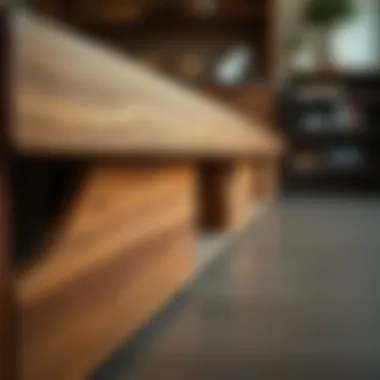
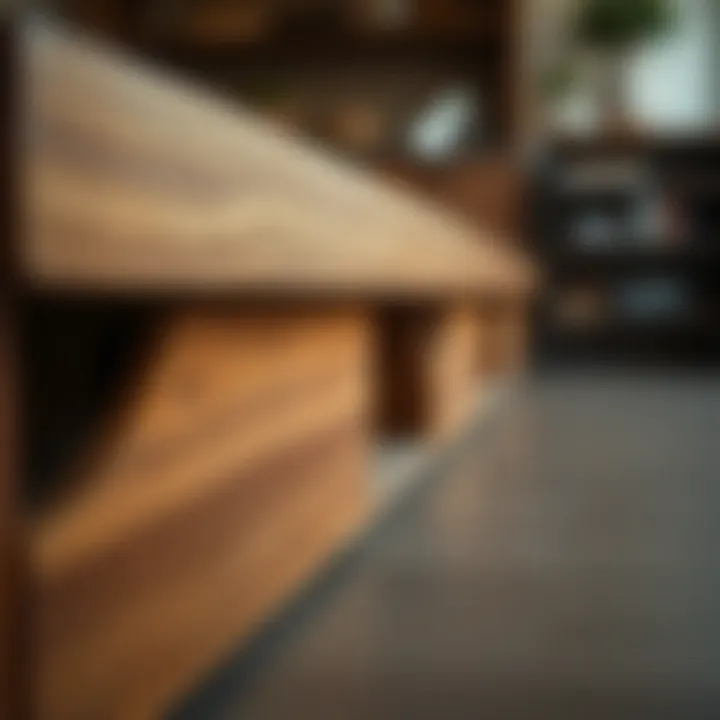
Additionally, metals can be treated to resist corrosion, which is vital in environments that might face moisture, such as kitchens or bathrooms. However, it's essential to consider the aesthetic; while industrialism has its charm, not everyone wants a stark metal look. Many manufacturers now provide metal legs in various finishes—think matte black, polished chrome, or even powder-coated colors—that can seamlessly blend into diverse environments.
Wood: Classic Aesthetics
Wood brings a unique warmth and classic aesthetics to furniture design, making it a favored choice among those who appreciate rustic charm. Hardwoods like oak, walnut, and maple are often used for their durability and ability to withstand significant weight. The natural grains and textures of the wood can add a touch of elegance to cabinets, making them not just functional, but striking.
However, with wood, maintenance is key. Wood can be sensitive to humidity and changes in temperature, leading to potential warping over time if not properly cared for. When selecting wood legs, it's wise to consider a suitable finish that can protect against moisture and wear while enhancing the wood’s natural beauty.
Composites: Versatile Solutions
Composite materials, such as engineered wood or high-density plastic, present a versatile option for cabinet legs. These materials often combine the aesthetics of wood with the strength of metals, providing a balance between form and function. Many composite legs are designed to mimic the appearance of wood while offering greater resistance to scratches or dents, which makes them particularly useful in high-traffic areas.
One notable advantage is cost-efficiency. Composites tend to come at a lower price point than solid wood or metal, which can greatly benefit those working within a budget. Moreover, they can often be made to exact specifications, allowing for customization that ensures a perfect match with any decor.
Design and Style Options
Choosing the right cabinet legs isn't just about functionality; it’s also about style. The design of cabinet legs has a significant impact on the overall aesthetic of furniture. This section highlights various styles of heavy-duty cabinet legs, each with unique characteristics and benefits that can complement different interiors and personal tastes.
Industrial Style Legs
Industrial style legs are all the rage, particularly in contemporary designs. Often made from materials like steel or iron, these legs add an edgy, rugged quality to furniture. They fit beautifully into loft-style apartments or modern spaces that embrace a raw, unfinished look. The stark contrast of the metal against wood or other softer elements can create a striking visual balance.
When selecting industrial legs, consider features like:
- Weight: Industrial legs tend to be heavier than their classic counterparts, ensuring durability.
- Finish: Options range from matte to brushed, allowing customization to suit your style.
For example, a coffee table with thick steel legs contrasted against a reclaimed wood top can serve as a compelling centerpiece in any living room.
"Industrial style is like wearing confidence on a sleeve — it says you’re bold enough to own your space."
Modern Minimalist Legs
The modern minimalist approach strips away the excess, focusing instead on clean lines and simplicity. Minimalist cabinet legs are typically unembellished and proportionate, made from materials like aluminum or lightweight wood. Their subtlety ensures that the furniture retains a sophisticated appearance without attracting too much attention.
Some key points to consider with modern minimalist legs:
- Versatility: They can be paired with almost any style of cabinet—be it sleek, contemporary, or even more eclectic designs.
- Height Variation: Many modern leg designs include adjustable heights providing flexibility in fitting various settings.
Imagine a sleek, white cabinet with narrow aluminum legs; it brings an air of modernity to a small apartment while keeping the space feeling open and uncluttered.
Rustic and Vintage Legs
For those who cherish nostalgia, rustic and vintage legs add warmth and character. Usually crafted from reclaimed wood or adorned with intricate designs, these legs enhance the charm of traditional furniture. They are ideal for farmhouses or homes infused with history, creating a sense of comfort and inviting vibes.
When opting for rustic legs, be aware of:
- Design Elements: Look for unique features like turned wood or decorative carvings that promote a vintage feel.
- Finish Options: A weathered finish can further accentuate that aged look, enhancing the rustic feel.
Incorporating vintage legs into a cabinet is like adding a touch of personality to a room, evoking stories from the past while ensuring modern utility. A wooden dining table with vintage legs can transform a simple dinner into a cherished family gathering.
The End
In the embrace of style and function, selecting the right cabinet leg design can significantly influence the character of your furniture. From the rugged charm of industrial styles to the understated elegance of modern minimalism, and the inviting warmth of rustic designs, the options are as varied as your imagination. When choosing, consider not just how they look but how they will contribute to the atmosphere of your space. With thoughtful selection, your furniture will not only endure the test of time but will also speak volumes about your aesthetic preferences.
Choosing the Right Cabinet Legs
Selecting the right cabinet legs may seem like a minor detail, but it can profoundly affect the furniture's functionality and appearance. The key is to identify legs that not only support the cabinet effectively but also complement your designed space. When choosing heavy-duty cabinet legs, it's essential to consider weight capacity, stability, height, adjustability, and how they will harmonize with the existing decor.
Weight Capacity and Stability
One of the most critical factors to keep in mind when choosing cabinet legs is weight capacity. Different materials and designs provide varying levels of sturdiness. For some cabinets, especially larger kitchen or storage units, legs need to support significant weight.
- Metals like steel or aluminum often offer higher weight capacities compared to wooden legs. They're durable and resistant to wear over time, making them ideal for heavy items.
- Wooden legs, while aesthetically appealing, may not provide the same level of strength and stability unless they are designed specifically for heavy use.
- Composite materials might offer a balance between strength and versatile design.
When any of these legs is installed, their stability also matters. A wobbly leg can lead to an unstable cabinet, which can be dangerous. Ensuring that the leg has a firm attachment to the cabinet body and the floor is a necessity to avoid future issues.
Height and Adjustability
Height is another critical aspect when selecting cabinet legs. The height influences not only the aesthetic appeal but also the functional usability of the furniture.
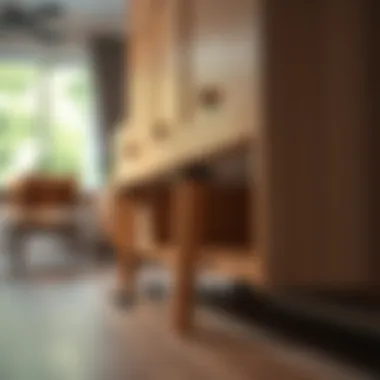
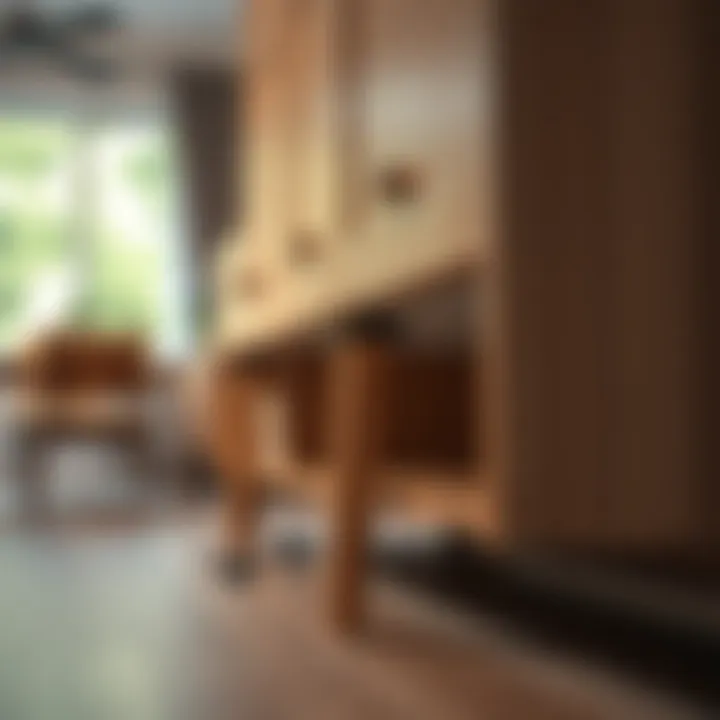
- For instance, kitchen cabinets typically require a standard height to match countertop dynamics. On the other hand, a crafting or workshop table might need additional height to prevent back strain during use.
Adjustable legs can be a game-changer. They allow fine-tuning to ensure a perfect fit, accommodating uneven floors or personal ergonomic preferences. Some products even come with built-in leveling systems, making installation less of a hassle.
Aesthetic Compatibility with Existing Decor
Finally, aesthetic compatibility is crucial for achieving a cohesive look in your space. The cabinet legs you choose should ideally complement the overall design theme of the room. Consider the following factors:
- Finish and Texture: Match the finish of the legs with other hardware in the room for uniformity. Metal finishes can range from shiny to matte, and wooden legs can be stained or painted to achieve desired tones.
- Style: Choose leg styles that resonate with the overall ambiance. For example, industrial legs may clash with a minimalistic or rustic interior.
- Color palette: Neutral tones may blend seamlessly with most decors, but bold colors can act as statement features if that's your design choice.
Selecting the right legs for your cabinets is an investment in your furniture's life and aesthetics. The alignment of strength, adjustability, and style not only enhances the user experience but can also elevate the overall look of your living space. Remembering these key points while shopping can save homeowners, designers, and DIY enthusiasts time, effort, and potential headaches down the line.
Installation Process
The installation process of heavy duty cabinet legs is not just a task to check off a list; it's a fundamental step in ensuring that your furniture stands the test of time. A properly installed leg can support hefty loads, stabilize uneven surfaces, and add that finishing touch to your décor. Catching this aspect right is key, not only for functionality but also for aesthetic coherence in design.
Tools Required for Installation
Before rolling up your sleeves, it's wise to gather all the necessary tools. Without the right ones, the process can be cumbersome and fraught with challenges. Here’s a streamlined list of tools you may need for installation:
- Drill or Screwdriver: Essential for attachments. A cordless drill can speed up the process.
- Measuring Tape: Accuracy is crucial. A good tape measure ensures even spacing.
- Level: To keep things straight. Nobody likes a wobbly cabinet.
- Pencil: For marking locations and measurements.
- Wrench or Ratchet: Needed for securing bolts, if applicable.
- Safety Gear: Glasses to protect your eyes from debris.
These tools not only make the job easier, they also lead to a successful installation, enhancing both safety and durability.
Step-by-Step Installation Guide
Now let’s get down to brass tacks with a step-by-step guide to help you install your cabinet legs effectively:
- Preparation: Start by laying your cabinet on a soft surface to avoid scratches. Ensure the area is clear of any obstructions.
- Measurement: Measure and mark where each leg will go. Use your measuring tape and pencil to ensure accurate placements, ideally at each corner for balance.
- Pre-drilling Holes: Depending on your leg design, pre-drill holes to ease the installation. This step helps prevent splitting, especially in wooden cabinet bases.
- Attaching the Legs: With a helper or sturdy surface, secure the legs using screws or bolts. If your design features adjustable legs, set them to the desired height before fixing.
- Leveling: After installing them, use the level tool to check if all legs are even. Adjust any that are uneven to avoid future mishaps.
- Final Check: Go around and ensure everything feels sturdy. Give it a gentle shake to confirm stability.
With these steps, you shouldn’t have much trouble; just take your time and double-check your work.
Common Installation Mistakes to Avoid
Even the most skilled DIYers might trip over common pitfalls during installation. Recognizing them ahead of time can save you a headache later on. Here are a few mistakes to steer clear of:
- Ignoring Weight Capacity: Not considering how much weight the legs can support may lead to shorter furniture life.
- Over-tightening Fasteners: Using too much force can damage the leg or cabinet material.
- Neglecting to Check Level: Failing to level your cabinet legs ensures an unstable base, which could cause tipping or wobbling.
- Skipping Measurements: Rushing through this can lead to uneven placement of legs.
- Incorrect Tools: Using a wrong-sized screwdriver or drill bit can ruin the process.
By being aware of these common mistakes, you’ll position yourself for a much smoother installation experience.
Maintenance Tips for Longevity
Caring for heavy duty cabinet legs is a crucial endeavor if one wishes to preserve the life and integrity of their furniture. Just as the foundation of a well-built home needs attention to ensure it remains sturdy, cabinet legs require routine care and appropriate maintenance to uphold their strength and stability. Proper maintenance not only extends the lifespan of these components but also enhances the overall aesthetic appeal of the cabinets. Regular upkeep can prevent unexpected failures and costly replacement, maintaining your investment in quality furniture.
Routine Checks and Inspections
Routine inspections are your first line of defense against potential issues with cabinet legs. Ideally, you should conduct these checks at least once every three months, but you may want to increase the frequency if your furniture bears significant weight or is in a high-traffic area. Look for the following key aspects during your inspections:
- Wobbling or Instability: Gently shake the furniture for any signs of instability. Wobbly legs may indicate loose screws or damage.
- Visible Wear: Examine for scratches or dents. These blemishes can impact the structural integrity if untreated.
- Rust or Corrosion: Especially with metal legs, some surface rust is expected. However, catching it early can mitigate its spread.
- Proper Height and Level: Ensure all legs are the same height and not sagging, which could lead to uneven wear.
By addressing issues promptly, you can often remedy problems before they require significant repairs.
Cleaning and Care Techniques
Keeping your cabinet legs clean is essential for both aesthetics and longevity. Dirt and grime can build up over time, which not only looks unappealing but can also cause materials to degrade faster. Here are effective cleaning techniques tailored to various materials:
- Metal Legs: Use a soft cloth with warm, soapy water to wipe down metal legs. If rust is present, gentle scrubbing with a soft brush and rust remover is recommended. Rinse well, then dry immediately to prevent moisture retention.
- Wood Legs: For wooden legs, avoid soaking them in water. Instead, use a slightly damp cloth to wipe them down. After cleaning, applying a wood conditioner can help ensure the wood remains nourished and protected against cracking or peeling.
- Composite Legs: Generally resistant to stains, composite materials can be cleaned with a mild detergent and warm water. Make sure to dry thoroughly after cleaning to prevent moisture damage.
Regular cleaning not only enhances the look of the legs but also promotes a healthier living environment.
Repairing and Replacing Legs
From time to time, even the best-maintained cabinet legs might need repairs or replacements. Knowing when to repair and when to replace is vital:
- Repairing Legs: If legs are wobbly due to loose screws, tighten them up using a screwdriver. If cracks appear in wood legs, you can fill them with wood filler and sand smooth before staining or sealing.
- Replacing Legs: If a leg is severely damaged, cracked beyond repair, or no longer safe, replacement is the wiser option. Prior to buying replacements, measure the height and style to ensure compatibility with your existing furniture.
It’s often advisable to consult a professional for intricate repairs to ensure stability and safety. A sturdy leg is essential for the overall structure of the cabinet, and ensuring each one is sound should be a priority.
"The longevity of your furniture hinges not just on the quality of its materials, but on the care and attention it receives over time."
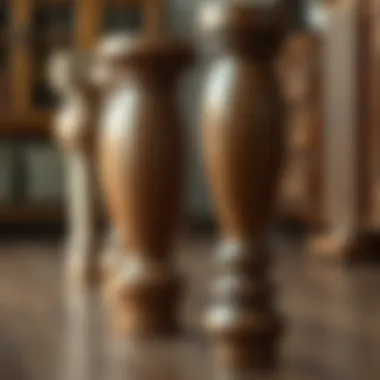
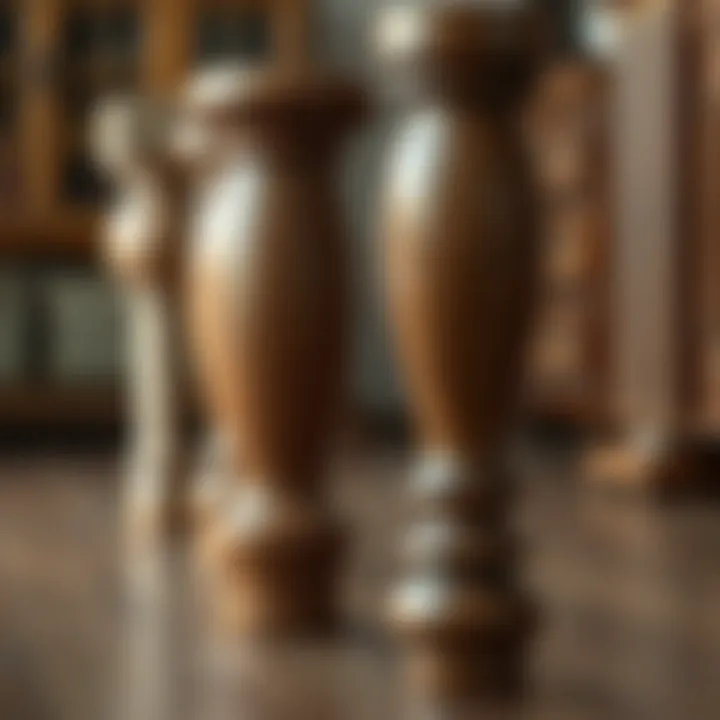
By following these maintenance tips, homeowners, designers, and DIY enthusiasts can ensure that their heavy duty cabinet legs not only fulfill their functional purposes but also remain visually appealing and sturdy for years to come.
Trends in Cabinet Leg Design
Trends in cabinet leg design play a pivotal role in modern furniture aesthetics and functionality. As tastes evolve, so too do the materials, shapes, and styles of cabinet legs, reflecting broader cultural movements and innovations in technology. Understanding these trends is crucial for homeowners, designers, and DIY enthusiasts to make informed choices that enhance both practicality and style in their living spaces.
Sustainable Material Trends
In today’s environmentally conscious world, sustainable material trends have gained significant traction. Sustainable materials are those that are sourced responsibly without depleting the planet's resources. Options like bamboo or recycled metals not only reduce waste but also offer durability. Here are a few aspects to consider:
- Bamboo: Known for its strength and lightweight nature, bamboo has become a popular choice. It offers a warm aesthetic while being an eco-friendly option.
- Recycled Metals: Repurposing metals not only minimizes waste but also introduces unique, weathered finishes that appeal to vintage and industrial styles.
- Local Sourcing: Opting for locally sourced materials supports community businesses and reduces carbon footprints associated with transportation.
Adopting sustainable materials isn’t just about being eco-conscious; it also reveals a commitment to quality and ethical sourcing, resonating deeply with a growing base of consumers who prefer brands aligning with their values.
"Sustainable choices not only serve to combat climate change but enrich your space with stories and origins that standard materials lack."
Technological Innovations
Technology has significantly altered how cabinet legs are designed and manufactured. Modern methods allow for precision and creativity that traditional craftsmanship may not achieve. Some noteworthy innovations include:
- 3D Printing: This allows for custom shapes and designs that were previously unattainable, enabling unique character in furniture. With 3D printing, homeowners can even create personalized components that suit their needs.
- Smart Legs: With the advent of the Internet of Things (IoT), cabinet legs are now available with built-in technology, such as adjustable heights or self-leveling capabilities. This innovation is particularly useful for individuals who require ergonomic solutions.
- Advanced Finishing Techniques: Innovations in finishes can enhance the wear resistance and aesthetic appeal of cabinet legs. Treatments like powder coating and UV finishes can provide long-lasting, vibrant colors while protecting against wear and tear.
These technological advancements offer not just enhancements in functionality but also open new avenues for creativity and personalization in furniture design.
Cultural Influences on Design
Cultural influences shape the aesthetics and materials of cabinet legs. Here are a few pertinent trends:
- Mid-Century Modern Revival: This style showcases tapered legs and simple forms, but with updated materials and colors responding to contemporary tastes.
- Scandinavian Influence: Known for its minimalistic style, Scandinavian design emphasizes funcionality with clean lines and natural materials, reflecting a simpler lifestyle.
- Global Eclecticism: With the world more connected than ever, designs are influenced by cultural exchanges. Elements like Moroccan geometry or Japanese simplicity are increasingly evident in cabinet leg designs.
By embracing these cultural aspects, designers and homeowners can create spaces that reflect a world of shared influences and unique stories, transforming furniture into a conversational piece.
Economic Factors Affecting Cabinet Legs
The significance of understanding the economic factors surrounding cabinet legs cannot be overstated. It influences not only the choice of materials and styles you opt for but also affects the overall durability and value of the furniture in your space. Recognizing these factors equips homeowners, designers, and DIY enthusiasts with crucial insights as they navigate the often convoluted landscape of furniture decisions.
Cost Analysis of Different Materials
When diving into the economics of cabinet legs, the first point of consideration is the cost associated with various materials. Generally, metals like steel and aluminum present a sturdy choice, yet they can escalate costs due to manufacturing and raw material expenses. For instance, a set of steel cabinet legs might set you back anywhere between $50 to $100 per leg, depending on the design complexity and finish.
On the flip side, wood, while offering an aesthetically pleasing option, also has varied price points based on the type. Hardwoods like oak and maple bring higher costs, often ranging from $40 to $90 per leg. In contrast, softwoods like pine can be more budget-friendly, costing between $20 and $50.
Composites can act as a sweet spot here. They often balance strength and cost and can be found in the $30 to $70 range. Choosing composites not only provides durability but can also be seen as economically friendly in the longer term due to lower maintenance requirements.
Market Demand and Availability
Another crucial component in the economic discussion of cabinet legs is market demand and availability. With the rising trend of home renovations and custom furniture creation, there has been a notable increase in the demand for heavy-duty cabinet legs. This surge has led to a corresponding rise in production, but it’s worth keeping an eye on availability.
As more consumers lean towards online shopping, the ease of procurement has also transformed. Specialty manufacturers and local shops are adjusting inventory to meet this rising demand. However, seasonal trends might affect availability; for example, demand spikes around spring when many undertake renovations. Thus, being informed about these fluctuations could lead you to make more strategic buying decisions.
"Today’s market for cabinet legs reflects a shift towards customization and durability, pushing classic styles to adapt and meet consumer expectations."
Impact of DIY Trends on Pricing
In recent years, the DIY movement has seen significant growth, impacting how people perceive the costs associated with cabinet legs. With a myriad of resources available — blogs, YouTube tutorials, and local workshops — many homeowners prefer to take matters into their own hands. This increasingly popular trend has driven manufacturers to create more affordable options for DIYers.
The impact also comes with a silver lining; the competitive pressure induced by DIY enthusiasts forces suppliers to offer better pricing. For instance, many now offer budget-friendly materials tailored specifically for DIY projects, making heavy-duty cabinet legs more accessible to a wider audience. Consequently, prices can be more favorable during peak DIY seasons, so planning your purchases around these times could lead to some decent savings.
Being aware of these economic factors illuminates the path toward not only informed decision-making but also can bolster the overall quality and longevity of your furniture selections. Navigating through these considerations may seem taxing, but it ultimately plays a role in ensuring that your investments stand the test of time.
Culmination
When it comes to heavy duty cabinet legs, their role in furniture stability and design cannot be overstated. This article has taken a stroll through various aspects of these essential components, highlighting their significance in crafting not only functional but also aesthetically pleasing furniture. With their sturdy nature, heavy duty legs offer reliability and support, ensuring that cabinets withstand the test of time and weight. Homeowners and DIYers alike stand to benefit from understanding the intricacies of these legs—not just in terms of functionality, but also in style.
Recap of Key Insights
To recap, we’ve explored several key insights about heavy duty cabinet legs:
- Material Matters: Choices range from robust metals to warm woods and innovative composites, each having its unique advantages.
- Design Versatility: The variety in styles—from industrial to rustic—means that there's something for every design palette.
- Installation Precautions: The installation process requires careful attention to detail. Knowing what tools to use and how to avoid common pitfalls is crucial.
- Maintenance is Key: Routine checks to ensure the longevity of the legs add to the overall lifespan of the furniture.
- Trends on the Rise: Sustainable materials are becoming increasingly popular, and technology is influencing design choices.
Incorporating these insights can help everyone from designers to homeowners create furniture that not only looks good but stands strong.
The Future of Cabinet Legs in Furniture Design
Looking ahead, the future of heavy duty cabinet legs is bright. As trends shift towards sustainability, we’re likely to see a rise in eco-friendly materials, making these legs even more appealing to a conscious consumer base. Technology is also playing a role; imagine legs with built-in adjustability features or smart technology to assist with movement and leveling. The interplay of these new materials and technological advancements might also lead towards tailored furniture solutions that adapt to specific needs.
So, as you embark on your journey of selecting heavy duty cabinet legs, remember that they are more than just functional. They're part of a broader conversation about durability, style, and innovation. In this constant evolution of design, keeping an eye on these factors can ensure that your furniture remains not only relevant but also exceptionally tailored to your home and lifestyle.
